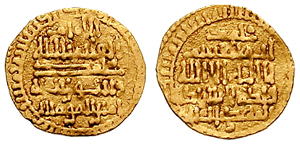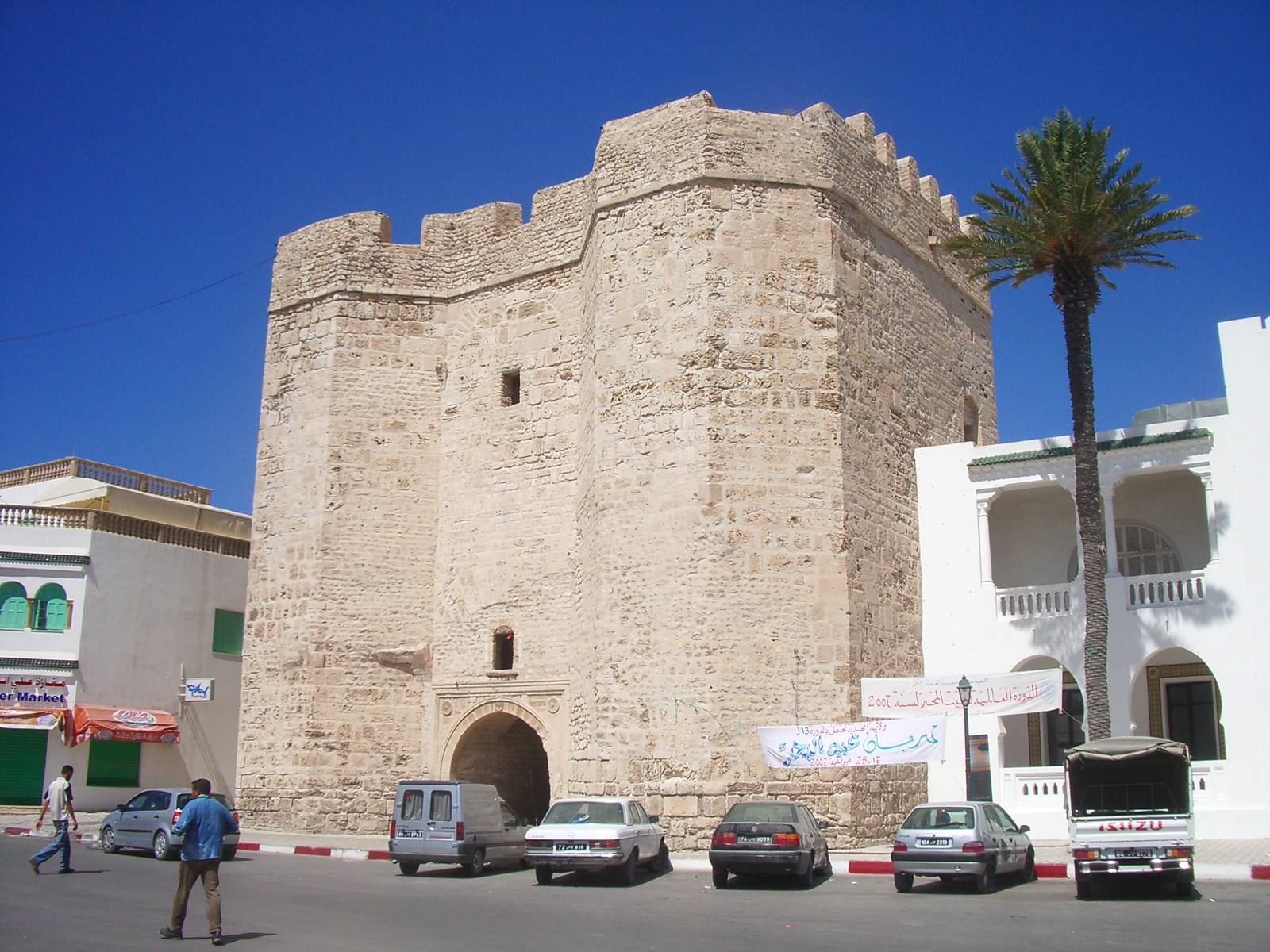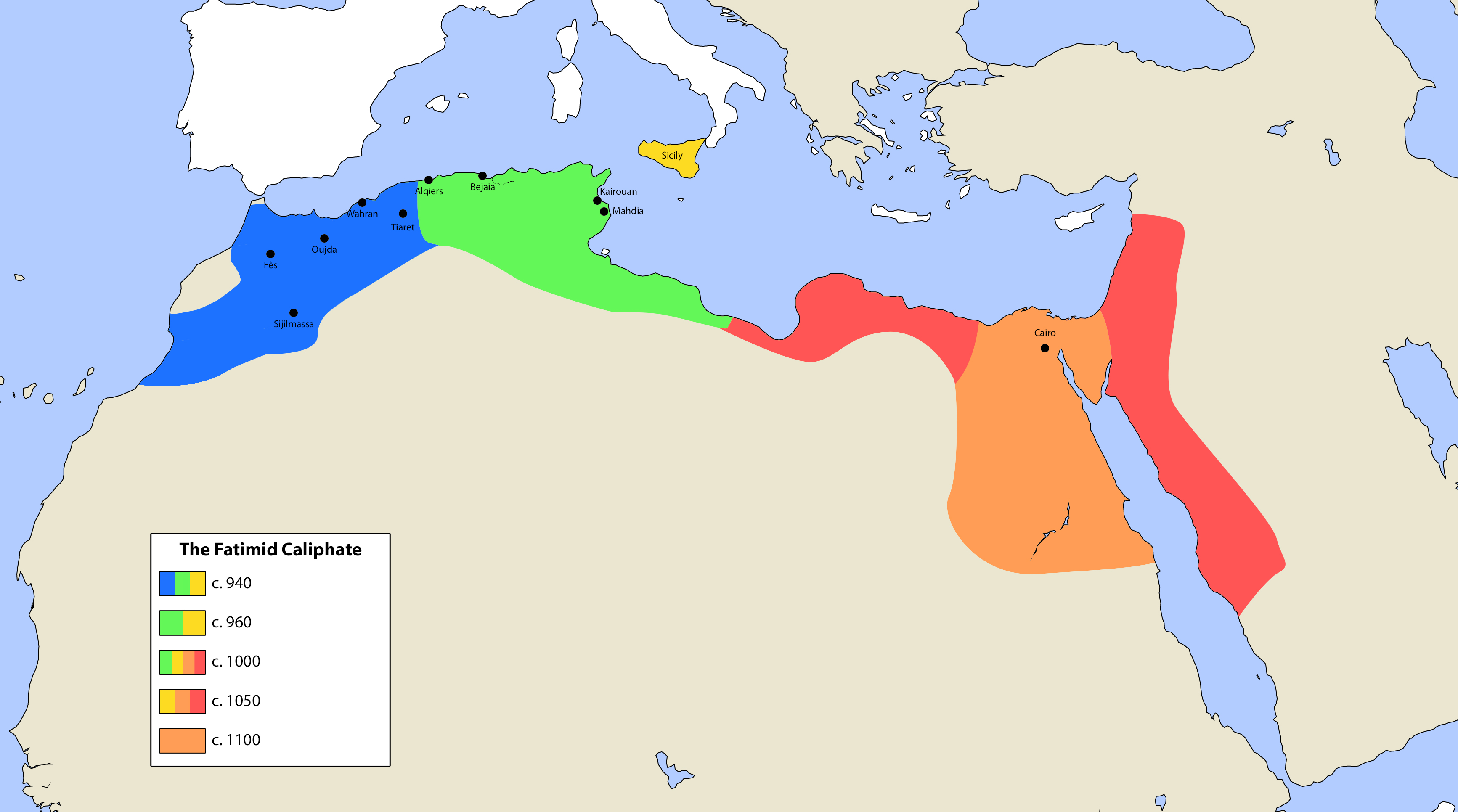|
Fatimid
The Fatimid Caliphate was an Ismaili Shi'a caliphate extant from the tenth to the twelfth centuries AD. Spanning a large area of North Africa, it ranged from the Atlantic Ocean in the west to the Red Sea in the east. The Fatimids, a dynasty of Arab origin, trace their ancestry to Muhammad's daughter Fatima and her husband ‘Ali b. Abi Talib, the first Shi‘a imam. The Fatimids were acknowledged as the rightful imams by different Isma‘ili communities, but also in many other Muslim lands, including Persia and the adjacent regions. Originating during the Abbasid Caliphate, the Fatimids conquered Tunisia and established the city of " al-Mahdiyya" ( ar, المهدية). The Ismaili dynasty ruled territories across the Mediterranean coast of Africa and ultimately made Egypt the center of the caliphate. At its height, the caliphate included – in addition to Egypt – varying areas of the Maghreb, Sudan, Sicily, the Levant, and the Hijaz. Between 902 to 909 the foundatio ... [...More Info...] [...Related Items...] OR: [Wikipedia] [Google] [Baidu] |
Fatimid Conquest Of Egypt
The Fatimid conquest of Egypt took place in 969, as the troops of the Fatimid Caliphate under the general Jawhar captured Egypt, then ruled by the autonomous Ikhshidid dynasty in the name of the Abbasid Caliphate. The Fatimids launched repeated invasions of Egypt soon after coming to power in Ifriqiya (modern Tunisia and eastern Algeria) in 909, but failed against the still strong Abbasid Caliphate. By the 960s, however, while the Fatimids had consolidated their rule and grown stronger, the Abbasid Caliphate had collapsed, and the Ikhshidid regime was facing prolonged crisis: foreign raids and a severe famine were compounded by the death in 968 of the strongman Abu al-Misk Kafur. The resulting power vacuum led to open infighting among the various factions in Fustat, the capital of Egypt. The atmosphere of crisis was deepened by the simultaneous advances of the Byzantine Empire against the Muslim states of the Eastern Mediterranean. Meanwhile, Fatimid agents operated openly in Egyp ... [...More Info...] [...Related Items...] OR: [Wikipedia] [Google] [Baidu] |
Fatimid Dynasty
The Fatimid dynasty () was an Isma'ili Shi'a dynasty of Arab descent that ruled an extensive empire, the Fatimid Caliphate, between 909 and 1171 CE. Claiming descent from Fatima and Ali, they also held the Isma'ili imamate, claiming to be the rightful leaders of the Muslim community. The line of Nizari Isma'ili imams, represented today by the Aga Khans, claims descent from a branch of the Fatimids. The Fatimid dynasty emerged as the leaders of the clandestine early Isma'ili missionary movement () in the ninth century CE, ostensibly acting on behalf of a hidden imam, implied at the time to be Muhammad ibn Isma'il. The Isma'ili spread widely across the Islamic world, then ruled by the Abbasid Caliphate. In 899, the future first Fatimid caliph, Abdallah, proclaimed himself to be the expected imam, causing a rift in the Isma'ili as the Qarmatians, who did not recognize his imamate, split off. In the meantime, Isma'ili agents had managed to conquer large parts of Yemen and If ... [...More Info...] [...Related Items...] OR: [Wikipedia] [Google] [Baidu] |
Isma'ilism
Isma'ilism ( ar, الإسماعيلية, al-ʾIsmāʿīlīyah) is a branch or sub-sect of Shia Islam. The Isma'ili () get their name from their acceptance of Imam Isma'il ibn Jafar as the appointed spiritual successor ( imām) to Ja'far al-Sadiq, wherein they differ from the Twelver Shia, who accept Musa al-Kadhim, the younger brother of Isma'il, as the true Imām. Isma'ilism rose at one point to become the largest branch of Shia Islam, climaxing as a political power with the Fatimid Caliphate in the 10th through 12th centuries. Ismailis believe in the oneness of God, as well as the closing of divine revelation with Muhammad, whom they see as "the final Prophet and Messenger of God to all humanity". The Isma'ili and the Twelvers both accept the same six initial Imams; the Isma'ili accept Isma'il ibn Jafar as the seventh Imam. After the death of Muhammad ibn Isma'il in the 8th century CE, the teachings of Ismailism further transformed into the belief system as it is ... [...More Info...] [...Related Items...] OR: [Wikipedia] [Google] [Baidu] |
Al-Adid
Abū Muḥammad ʿAbd Allāh ibn Yūsuf ( ar, أبو محمد عبد الله بن يوسف; 1151–1171), better known by his regnal name al-ʿĀḍid li-Dīn Allāh ( ar, العاضد لدين الله, , Strengthener of God's Faith), was the fourteenth and last caliph of the Fatimid dynasty, and the 24th imam of Hafizi Isma'ilism, reigning from 1160 to 1171. Coming to the throne as a child, he spent his reign as a puppet in the hands of various strongmen who occupied the vizierate, and was a mostly helpless bystander to the collapse of the Fatimid Caliphate. In the course of his reign, both the Crusader Kingdom of Jerusalem and the Sunni Syrian ruler Nur al-Din availed themselves of the power struggles in Cairo and the enfeeblement of the Fatimid state to advance their own claims on the country. For a while, the vizier Shawar tried to play both sides off against one another, but in January 1169, Nur al-Din's general Shirkuh finally managed to overthrow Shawar and occup ... [...More Info...] [...Related Items...] OR: [Wikipedia] [Google] [Baidu] |
Abdullah Al-Mahdi Billah
Abū Muḥammad ʿAbd Allāh/ʿUbayd Allāh ibn al-Ḥusayn (), 873 – 4 March 934, better known by his regnal name al-Mahdi Billah, was the founder of the Isma'ili Fatimid Caliphate, the only major Shi'a caliphate in Islamic history, and the eleventh Imam of the Isma'ili faith. Early life The future caliph al-Mahdi Billah was born as Sa'id, the son of Ahmad's elder son, al-Husayn, who died around 880. The official biography gives the date of birth as 31 July 874, although a different tradition gives a date exactly one year earlier. After his father's death, he was fostered by his uncle Abu'l-Shalaghlagh, who was without an heir of his own—his son and grandchild were reportedly captured and imprisoned by the Abbasids. Sa'id was thus designated as his successor, and given his uncle's daughter in marriage. Most of the information about Sa'id's early life comes from the memoirs of the eunuch chamberlain Ja'far, who was a few months older than Sa'id and came with him to the ho ... [...More Info...] [...Related Items...] OR: [Wikipedia] [Google] [Baidu] |
Cairo
Cairo ( ; ar, القاهرة, al-Qāhirah, ) is the capital of Egypt and its largest city, home to 10 million people. It is also part of the largest urban agglomeration in Africa, the Arab world and the Middle East: The Greater Cairo metropolitan area, with a population of 21.9 million, is the 12th-largest in the world by population. Cairo is associated with ancient Egypt, as the Giza pyramid complex and the ancient cities of Memphis and Heliopolis are located in its geographical area. Located near the Nile Delta, the city first developed as Fustat, a settlement founded after the Muslim conquest of Egypt in 640 next to an existing ancient Roman fortress, Babylon. Under the Fatimid dynasty a new city, ''al-Qāhirah'', was founded nearby in 969. It later superseded Fustat as the main urban centre during the Ayyubid and Mamluk periods (12th–16th centuries). Cairo has long been a centre of the region's political and cultural life, and is titled "the city of a thousa ... [...More Info...] [...Related Items...] OR: [Wikipedia] [Google] [Baidu] |
Saladin In Egypt
Saladin in Egypt concerns the history of Egypt from the arrival of Saladin in 1163 and his reign as its leader from 1174 until his death in 1193. Egypt was in a state of decay prior to Saladin's rise to power with the political and social situation in shambles. Saladin first arrived in Egypt alongside his uncle Shirkuh on a campaign launched by Nur al-Din. He would rise to prominence under Shirkuh eventually succeeding him as vizier of Egypt. When the Fatimid Caliphate fell in 1171, Saladin was the only remaining authority in Egypt, he would use his increased power and independence to expand his realm and influence. Egypt before Saladin The Fatimid Caliphate that had ruled in Egypt since 969 was on the verge of total disintegration in the period before Saladin's arrival. The challenges that faced the state were extensive and touched on every aspect of life in Egypt. The condition of Fatimid Egypt can be best segmented into three areas: political, social, and economic. Politica ... [...More Info...] [...Related Items...] OR: [Wikipedia] [Google] [Baidu] |
List Of Fatimid Caliphs
This is a list of an Arab dynasty, the Shi'ite caliphs of the Fatimid dynasty (909–1171). The Shi'ite caliphs were also regarded at the same time as the imams of the Isma'ili branch of Shi'a Islam. Family tree of Fatimid caliphs See also * List of Caliphs * List of rulers of Egypt *List of Ismaili imams This is a list of the Imams as recognized by the different sub-sects of the Ismai'li sect of Shia Islam. Imams are considered members of the '' Bayt'' (Household) of Muhammad through his daughter Fatimah. Early Imams All Isma'ili sects sha ... Notes References {{Fatimid Caliphate topics Fatimid caliphs Fatmid caliphs Fatimid caliphs Fatimid caliphs Fatimid caliphs Medieval Islamic world-related lists ... [...More Info...] [...Related Items...] OR: [Wikipedia] [Google] [Baidu] |
Shia Islam
Shīʿa Islam or Shīʿīsm is the second-largest branch of Islam. It holds that the Islamic prophet Muhammad designated ʿAlī ibn Abī Ṭālib as his successor (''khalīfa'') and the Imam (spiritual and political leader) after him, most notably at the event of Ghadir Khumm, but was prevented from succeeding Muhammad as the leader of the Muslims as a result of the choice made by some of Muhammad's other companions (''ṣaḥāba'') at Saqifah. This view primarily contrasts with that of Sunnī Islam, whose adherents believe that Muhammad did not appoint a successor before his death and consider Abū Bakr, who was appointed caliph by a group of senior Muslims at Saqifah, to be the first rightful (''rāshidūn'') caliph after Muhammad. Adherents of Shīʿa Islam are called Shīʿa Muslims, Shīʿītes, or simply Shīʿa or Shia. Shīʿa Islam is based on a ''ḥadīth'' report concerning Muhammad's pronouncement at Ghadir Khumm.Esposito, John. "What Everyone Needs t ... [...More Info...] [...Related Items...] OR: [Wikipedia] [Google] [Baidu] |
Shi'a
Shīʿa Islam or Shīʿīsm is the second-largest Islamic schools and branches, branch of Islam. It holds that the Prophets and messengers in Islam, Islamic prophet Muhammad in Islam, Muhammad designated Ali, ʿAlī ibn Abī Ṭālib as his Succession to Muhammad, successor (''khalīfa'') and the Imamah (Shia doctrine), Imam (spiritual and political leader) after him, most notably at the event of Ghadir Khumm, but was prevented from succeeding Muhammad as the leader of the Muslims as a result of the choice made by some of Companions of the Prophet, Muhammad's other companions (''ṣaḥāba'') at Saqifah. This view primarily contrasts with that of Sunni Islam, Sunnī Islam, whose adherents believe that Muhammad did not appoint a successor before Death of Muhammad, his death and consider Abu Bakr, Abū Bakr, who was appointed caliph by a group of senior Muslims at Saqifah, to be the first Rashidun, rightful (''rāshidūn'') caliph after Muhammad. Adherents of Shīʿa Islam are c ... [...More Info...] [...Related Items...] OR: [Wikipedia] [Google] [Baidu] |
Mansouria, Tunisia
El-Mansuriya or Mansuriya ( ar, المنصورية), near Kairouan, Tunisia, was the capital of the Fatimid Caliphate during the rule of the Ismaili Imams al-Mansur bi-Nasr Allah (r. 946–953) and al-Mu'izz li-Din Allah (r. 953–975). Built between 946 and 972, el-Mansuriya was a walled city holding elaborate palaces surrounded by gardens, artificial pools and water channels. It was briefly the centre of a powerful state that encompassed most of North Africa and Sicily. It continued to serve as provincial capital of the Zirids until 1057, when it was destroyed by the invading Banu Hilal tribes. Any useful objects or relics were scavenged during the centuries that followed. Today, only faint traces remain. Background The Fatimid Caliphate originated in an Ismaili Shia movement launched in Syria by Abd Allah al-Akbar. He claimed descent through Ismail, the seventh Shia imam, from the Islamic prophet Muhammad's daughter Fatimah. The Fatimid Dynasty is named after Fat ... [...More Info...] [...Related Items...] OR: [Wikipedia] [Google] [Baidu] |
Caliphate
A caliphate or khilāfah ( ar, خِلَافَة, ) is an institution or public office under the leadership of an Islamic steward with the title of caliph (; ar, خَلِيفَة , ), a person considered a political-religious successor to the Islamic prophet Muhammad and a leader of the entire Muslim world ( ummah). Historically, the caliphates were polities based on Islam which developed into multi-ethnic trans-national empires. During the medieval period, three major caliphates succeeded each other: the Rashidun Caliphate (632–661), the Umayyad Caliphate (661–750), and the Abbasid Caliphate (750–1258). In the fourth major caliphate, the Ottoman Caliphate, the rulers of the Ottoman Empire claimed caliphal authority from 1517. Throughout the history of Islam, a few other Muslim states, almost all hereditary monarchies such as the Mamluk Sultanate (Cairo) and Ayyubid Caliphate, have claimed to be caliphates. The first caliphate, the Rashidun Caliphate, was estab ... [...More Info...] [...Related Items...] OR: [Wikipedia] [Google] [Baidu] |






.png)
